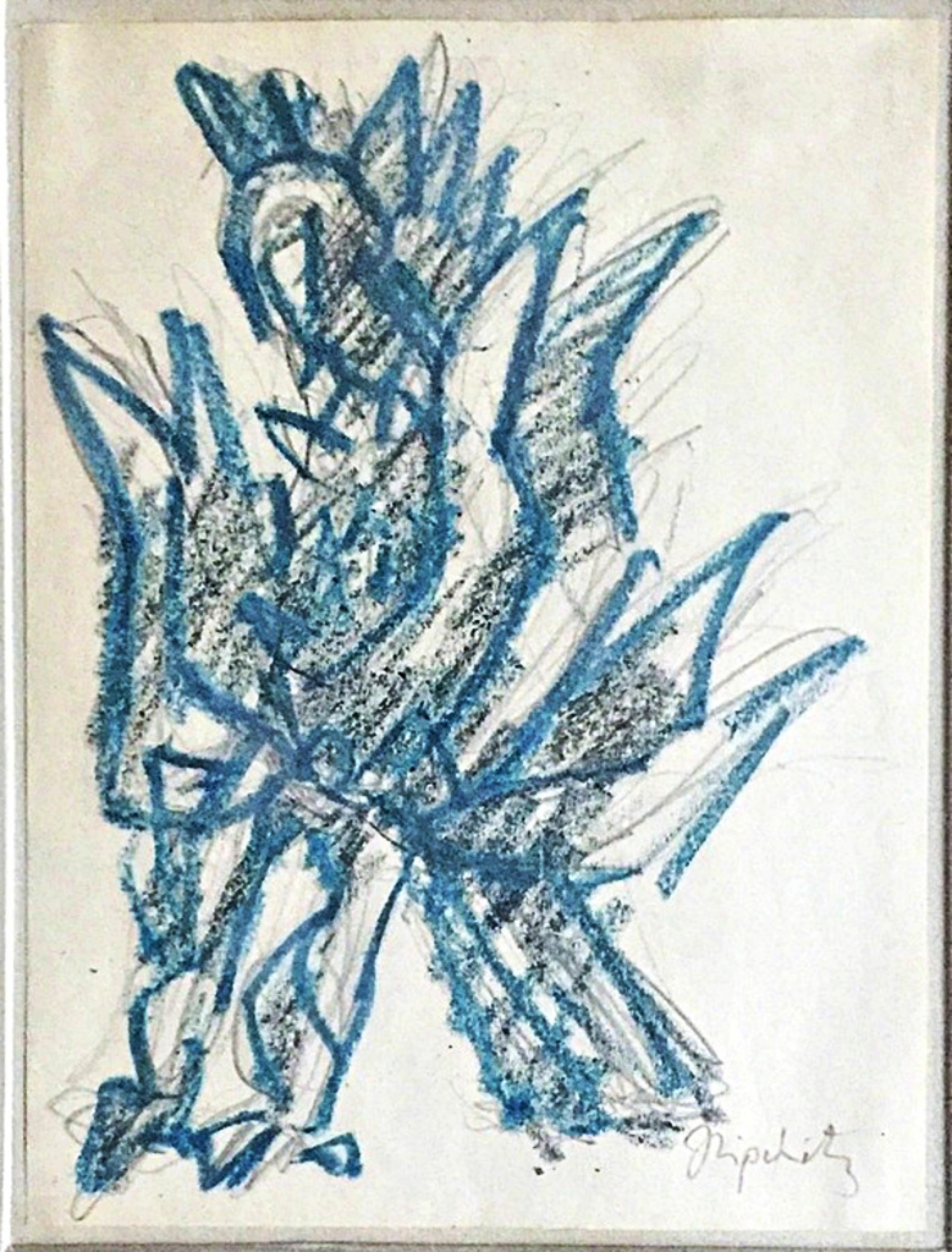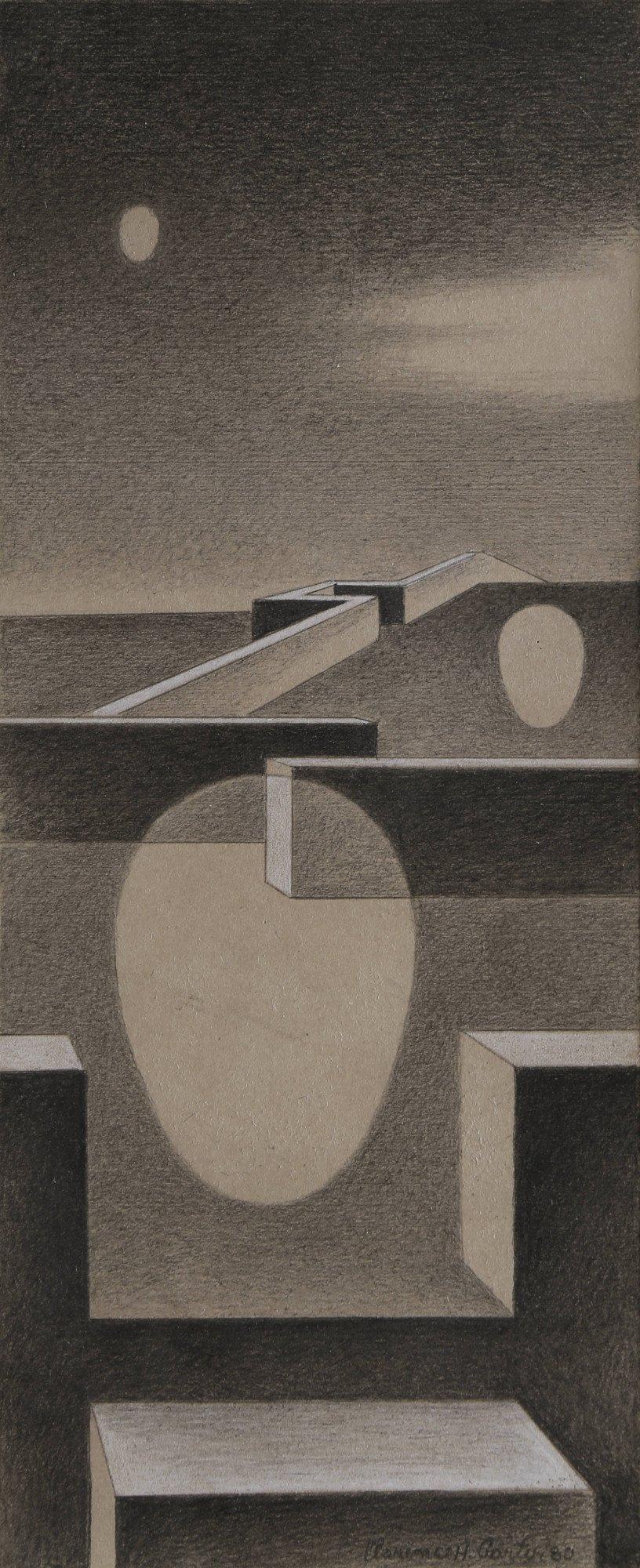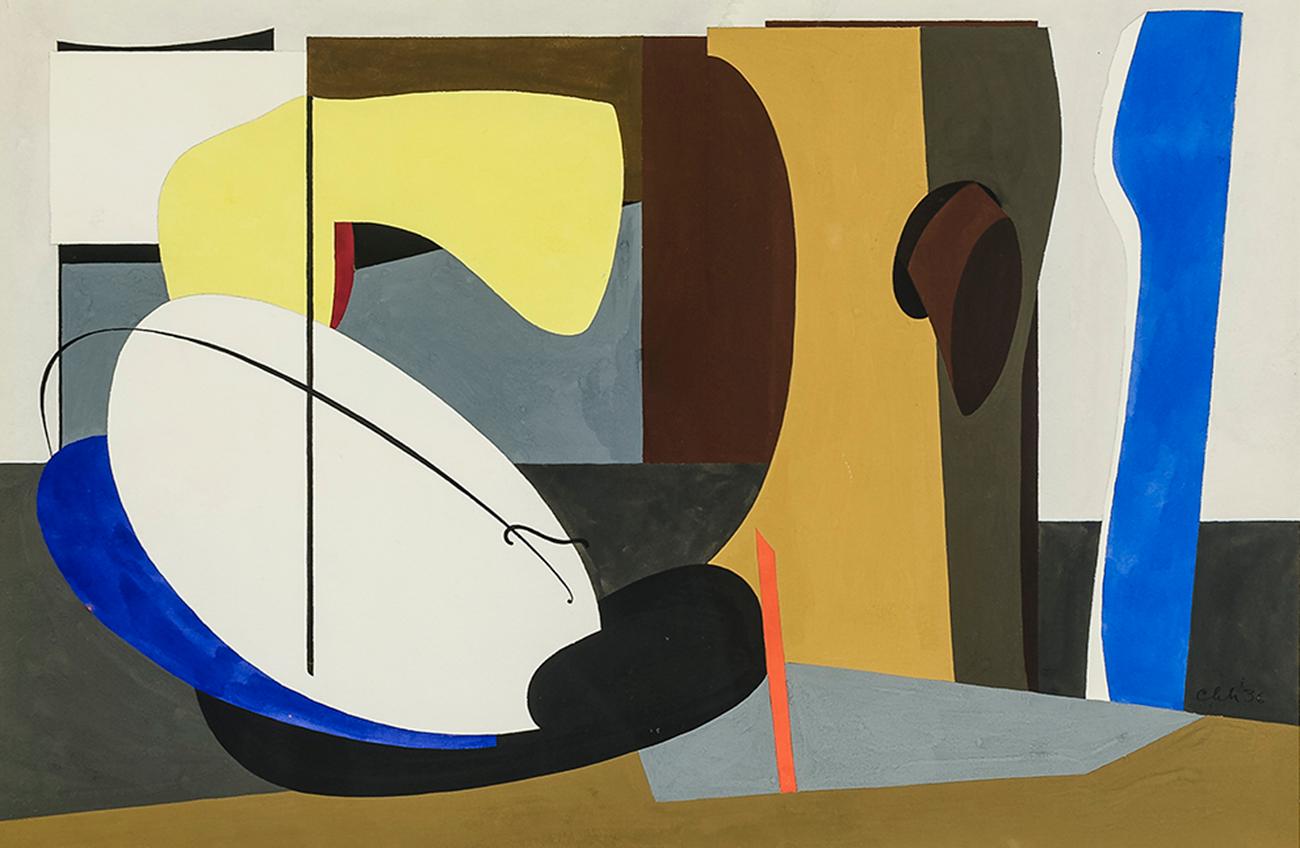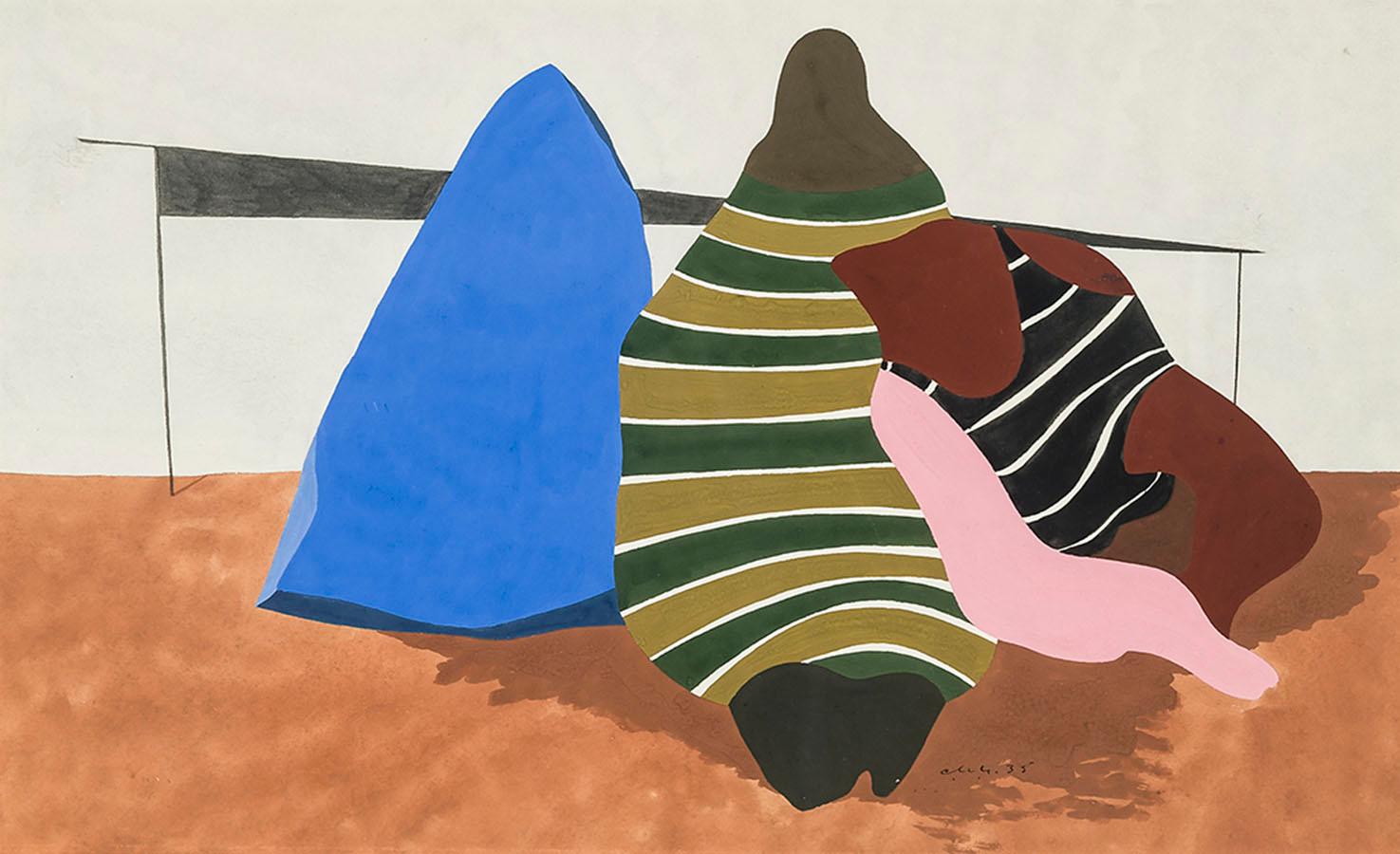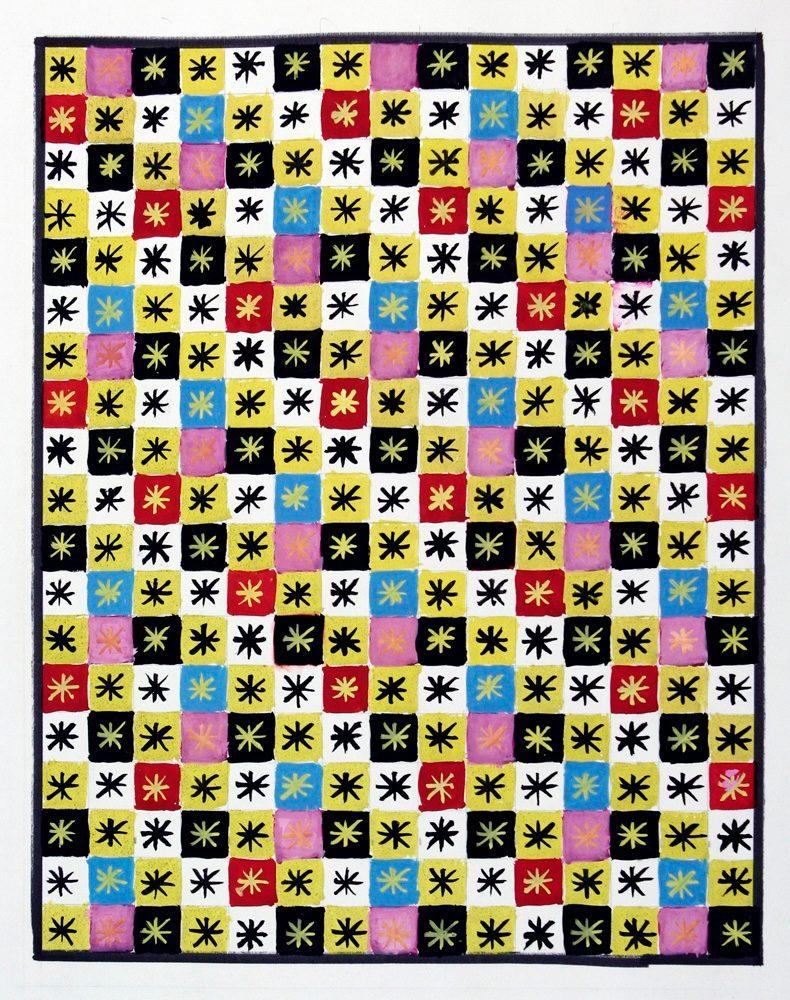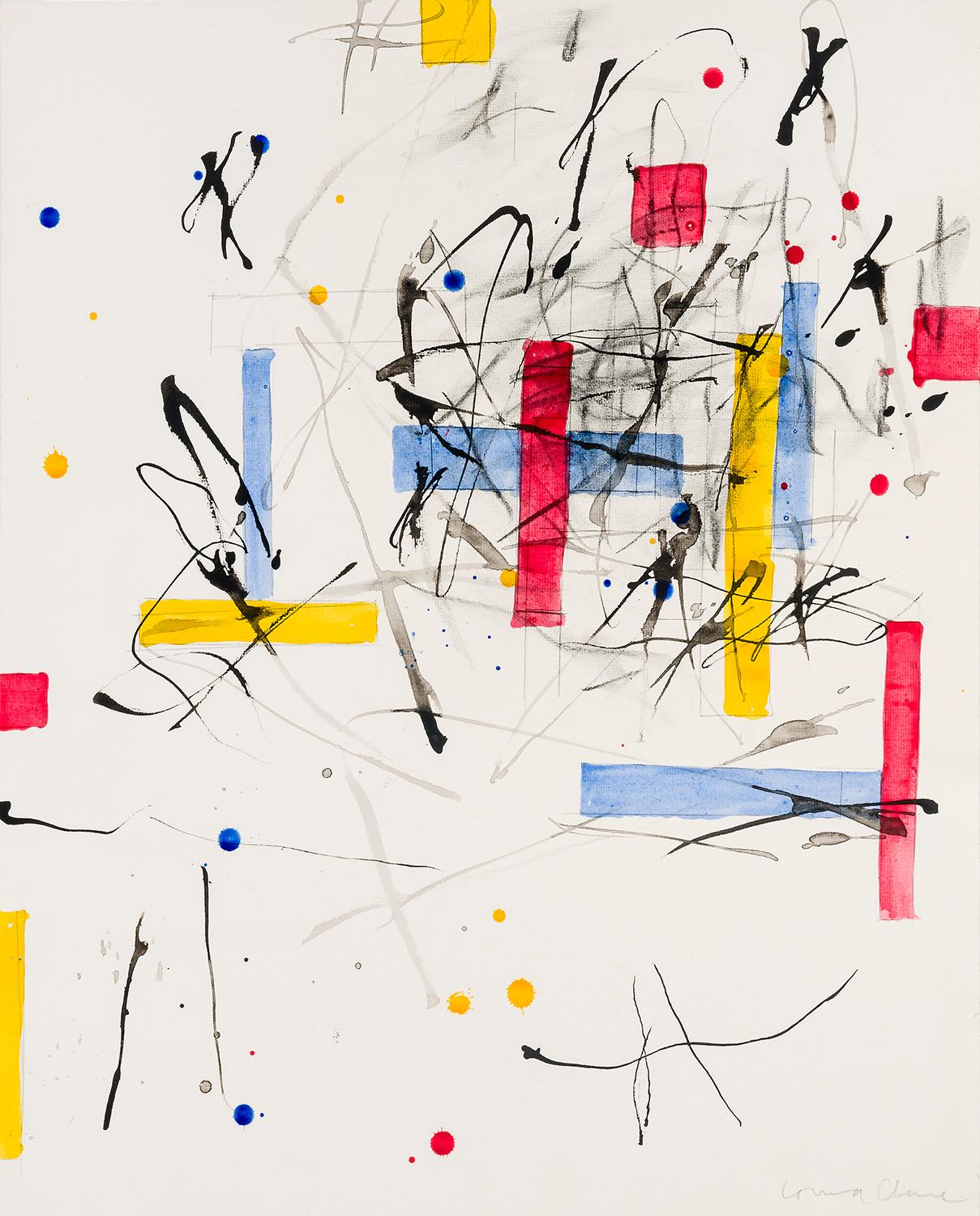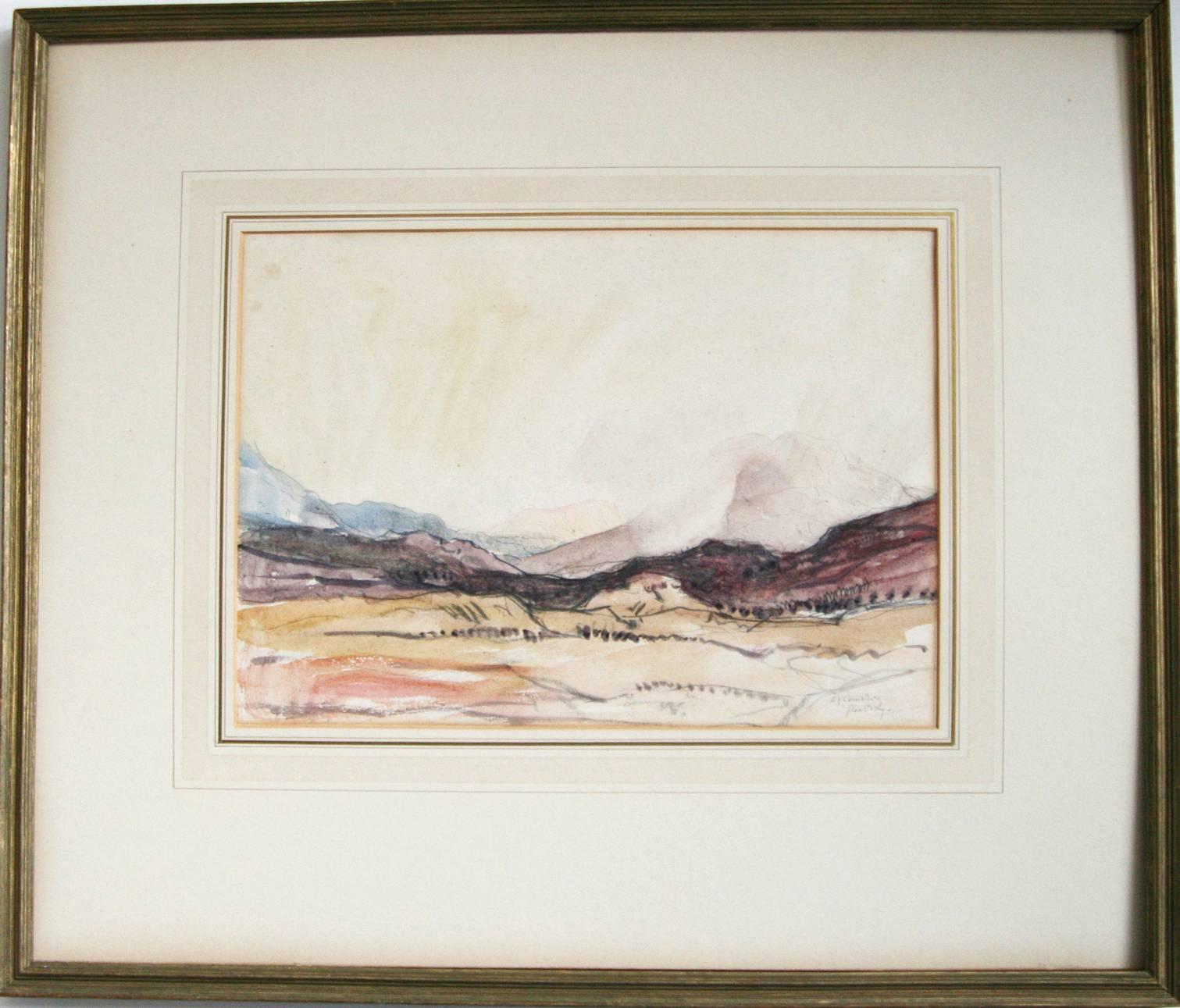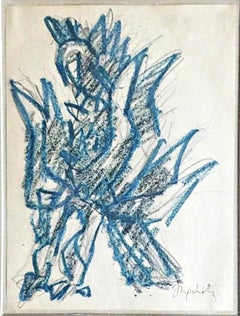Preparatory sculpture study N°3
View Similar Items
1 of 8
Roger DesserpritPreparatory sculpture study N°3circa 1970
circa 1970
About the Item
You May Also Like
- Swallows by the water. 1976, paper, pencil, 45. 5 x 40. 5 cmLocated in Riga, LVSwallows by the water. 1976, paper, pencil, 45. 5 x 40. 5 cm Dzidra Ezergaile (1926-2013) Born in Riga. School years alternate with summer work in the countryside. In 1947, she bega...Category
1970s Modern Abstract Drawings and Watercolors
MaterialsPaper, Pencil
- Hai (Abba) (Hebrew translation: Hey Father)By Louis LozowickLocated in Fairlawn, OHHai (Abba) (Hebrew translation: Hey Father) Signed in ink lower left by the artist’s widow “AL” (Adele Lozowick) Original label from early exhibition verso at The Art Corner Graphit...Category
1960s American Modern Abstract Drawings and Watercolors
MaterialsGraphite
- Study for a Lesson from a Disaster, original drawing by famed modernist sculptorBy Jacques LipchitzLocated in New York, NYJACQUES LIPCHITZ Study for a Lesson from a Disaster, ca. 1952 Black and Blue Crayon on Paper Signed in graphite pencil lower right front Unique work of art Framed: held in original v...Category
Mid-20th Century Modern Abstract Drawings and Watercolors
MaterialsMixed Media, Graphite, Crayon, Wax Crayon
- Untitled Sheep DrawingBy Menashe KadishmanLocated in New York, NYMenashe Kadishman Untitled Sheep Drawing, ca. 1985 Unique Graphite Drawing Hand signed and inscribed on the front Frame Included Unique whimsical drawing...Category
1980s Modern Abstract Drawings and Watercolors
MaterialsPencil
- Study for Worlds Beyond - Surrealist graphite drawing, Ohio artistBy Clarence Holbrook CarterLocated in Beachwood, OHClarence Holbrook Carter (American, 1904-2000) Study for Worlds Beyond, 1980 Graphite, collage and white heightening on illustration board Signed and dated lower right 10.75 x 4.5 in...Category
1980s American Modern Figurative Drawings and Watercolors
MaterialsGraphite
- Two Wood Ducks on a Flowering BranchBy Joseph StellaLocated in New York, NYJoseph Stella was a visionary artist who painted what he saw, an idiosyncratic and individual experience of his time and place. Stella arrived in New York in 1896, part of a wave of Italian immigrants from poverty-stricken Southern Italy. But Stella was not a child of poverty. His father was a notary and respected citizen in Muro Locano, a small town in the southern Appenines. The five Stella brothers were all properly educated in Naples. Stella’s older brother, Antonio, was the first of the family to come to America. Antonio Stella trained as a physician in Italy, and was a successful and respected doctor in the Italian community centered in Greenwich Village. He sponsored and supported his younger brother, Joseph, first sending him to medical school in New York, then to study pharmacology, and then sustaining him through the early days of his artistic career. Antonio Stella specialized in the treatment of tuberculosis and was active in social reform circles. His connections were instrumental in Joseph Stella’s early commissions for illustrations in reform journals. Joseph Stella, from the beginning, was an outsider. He was of the Italian-American community, but did not share its overwhelming poverty and general lack of education. He went back to Italy on several occasions, but was no longer an Italian. His art incorporated many influences. At various times his work echoed the concerns and techniques of the so-called Ashcan School, of New York Dada, of Futurism and, of Cubism, among others. These are all legitimate influences, but Stella never totally committed himself to any group. He was a convivial, but ultimately solitary figure, with a lifelong mistrust of any authority external to his own personal mandate. He was in Europe during the time that Alfred Stieglitz established his 291 Gallery. When Stella returned he joined the international coterie of artists who gathered at the West Side apartment of the art patron Conrad Arensberg. It was here that Stella became close friends with Marcel Duchamp. Stella was nineteen when he arrived in America and studied in the early years of the century at the Art Students League, and with William Merritt Chase, under whose tutelage he received rigorous training as a draftsman. His love of line, and his mastery of its techniques, is apparent early in his career in the illustrations he made for various social reform journals. Stella, whose later work as a colorist is breathtakingly lush, never felt obliged to choose between line and color. He drew throughout his career, and unlike other modernists, whose work evolved inexorably to more and more abstract form, Stella freely reverted to earlier realist modes of representation whenever it suited him. This was because, in fact, his “realist” work was not “true to nature,” but true to Stella’s own unique interpretation. Stella began to draw flowers, vegetables, butterflies, and birds in 1919, after he had finished the Brooklyn Bridge series of paintings, which are probably his best-known works. These drawings of flora and fauna were initially coincidental with his fantastical, nostalgic and spiritual vision of his native Italy which he called Tree of My Life (Mr. and Mrs. Barney A. Ebsworth Foundation and Windsor, Inc., St. Louis, illus. in Barbara Haskell, Joseph Stella, exh. cat. [New York: Whitney Museum of American Art, 1994], p. 111 no. 133). Two Wood Ducks...Category
20th Century American Modern Still-life Drawings and Watercolors
MaterialsColor Pencil
Recently Viewed
View AllMore Ways To Browse
Peter Rosenthal
B Thom
Faye Dunaway At The Pool
Fontaine Oil Painting
Life Gives You Lemons
Universe Manifesto
Windows Birkin
Los Angeles 1885
Mixed Media Under 500
Child On A Donkey
Leroy Neiman Signed Numbered Serigraphs
Peter Max If
Shepard Fairey 1996
Hand Held Fan Framed
New Zealand Sale
Robert Indiana Love 1996
Damien Hirst Red Butterflies
Oversized Original Vintage Posters

